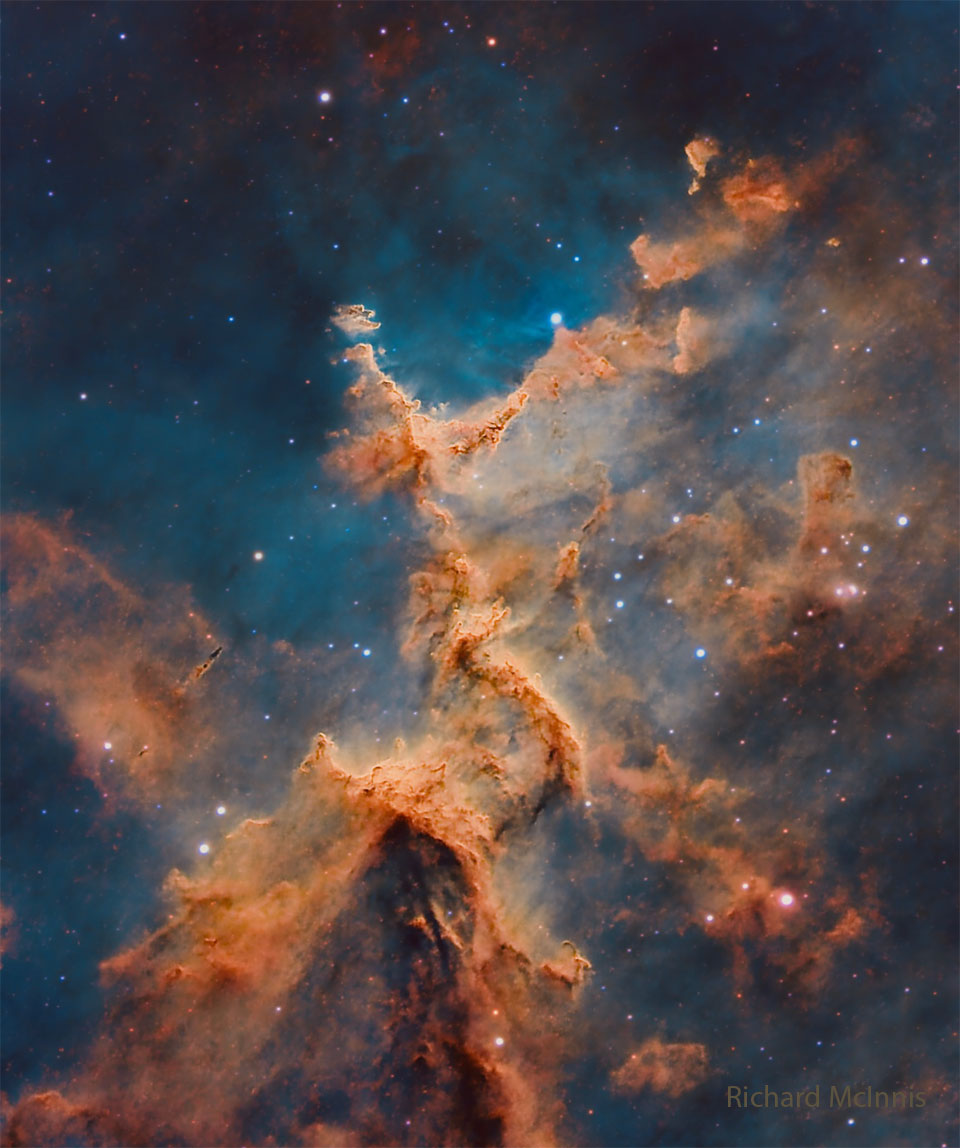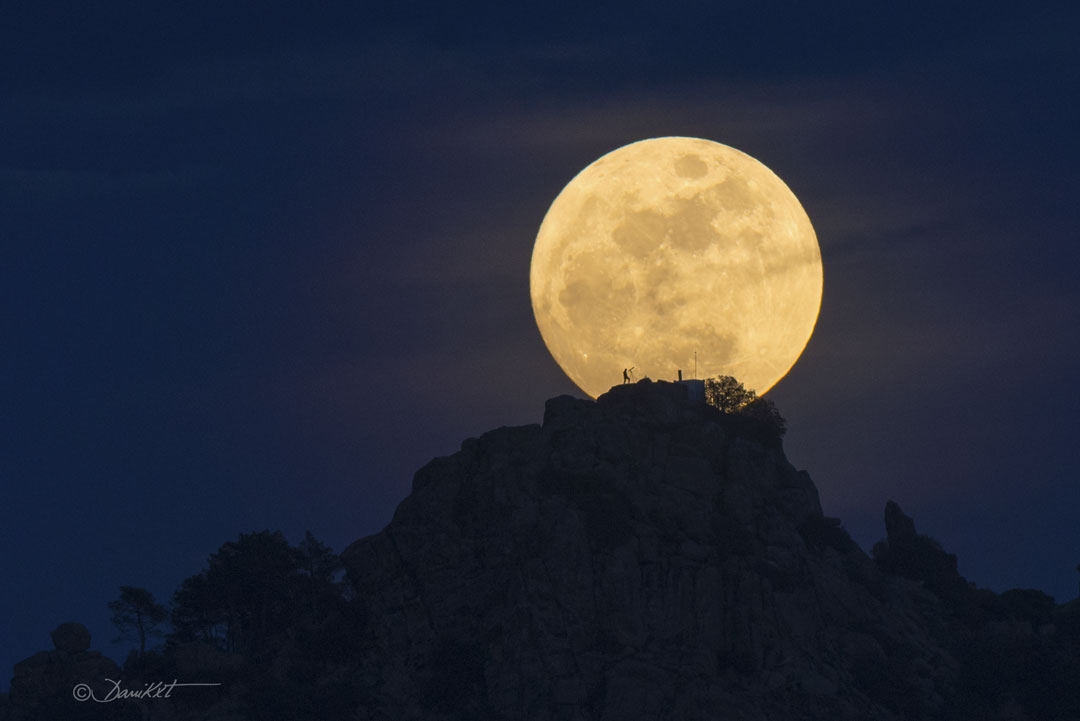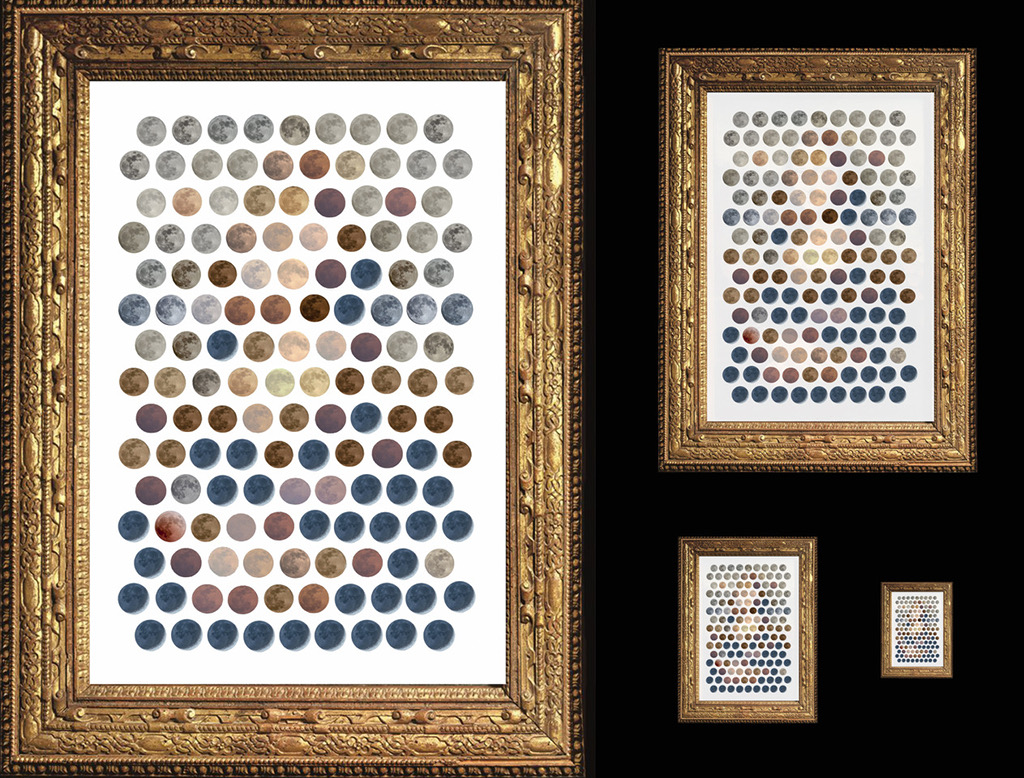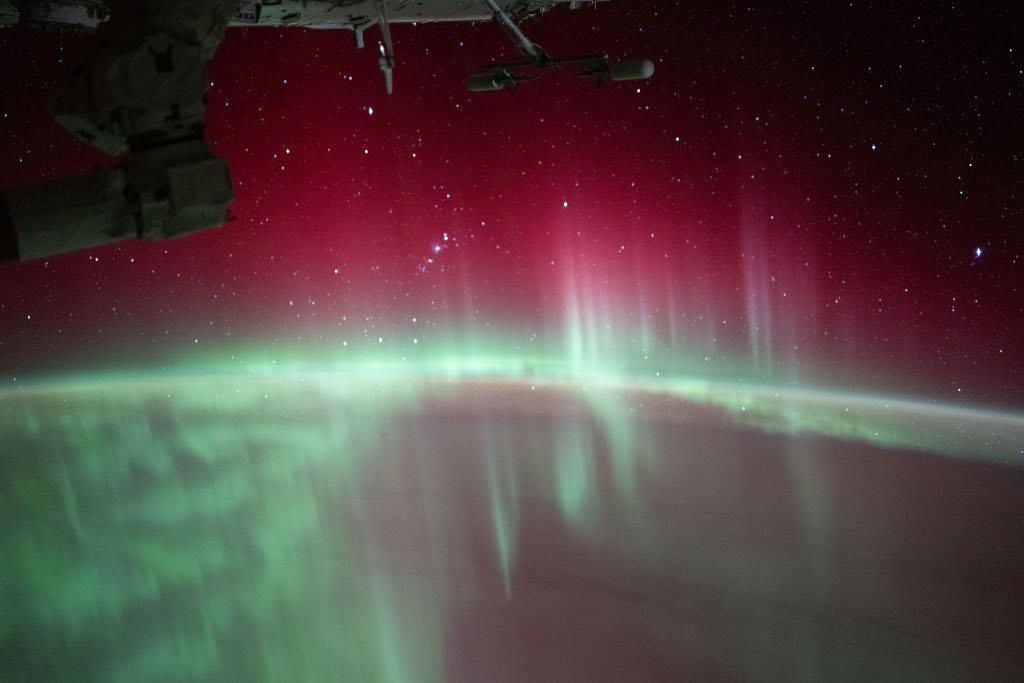Nombre total de pages vues
17/09/2024
PLANTES FASCINANTES - Un bourdon ? non - c'est l'orchidée Orphrys bombyliflora
ASTRONOMY - Melotte 15 in the Heart Nebula
2024 September 17
Image Credit & Copyright: Richard McInnis
Explanation: Cosmic clouds form fantastic shapes in the central regions of emission nebula IC 1805. The clouds are sculpted by stellar winds and radiation from massive hot stars in the nebula's newborn star cluster, Melotte 15. About 1.5 million years young, the cluster stars are scattered in this colorful skyscape, along with dark dust clouds in silhouette against glowing atomic gas. A composite of narrowband and broadband telescopic images, the view spans about 15 light-years and includes emission from ionized hydrogen, sulfur, and oxygen atoms mapped to green, red, and blue hues in the popular Hubble Palette. Wider field images reveal that IC 1805's simpler, overall outline suggests its popular name - the Heart Nebula. IC 1805 is located about 7,500 light years away toward the boastful constellation Cassiopeia.
16/09/2024
INVENTIONS A L'HORIZON 2050 - Une mini centrale nucléaire en kit
ASTRONOMY - Mercury's Vivaldi Crater from BepiColombo
2024 September 16
Image Credit: ESA, JAXA, BepiColombo, MTM
Explanation: Why does this large crater on Mercury have two rings and a smooth floor? No one is sure. The unusual feature called Vivaldi Crater spans 215 kilometers and was imaged again in great detail by ESA's and JAXA's robotic BepiColombo spacecraft on a flyby earlier this month. A large circular feature on a rocky planet or moon is usually caused by either an impact by a small asteroid or a comet fragment, or a volcanic eruption. In the case of Vivaldi, it is possible that both occurred -- a heavy strike that caused a smooth internal lava flow. Double-ringed craters are rare, and the cause of the inner rings remains a topic of research. The speed-slowing gravity-assisted flyby of Mercury by BepiColombo was in preparation for the spacecraft entering orbit around the Solar System's innermost planet in 2026.
15/09/2024
INVENTIONS A L'HORIZON 2050 - La ferme verticale nourrira les citadins
ASTRONOMY - Find the Man in the Moon
2024 September 15
Image Credit & Copyright: Dani Caxete
Explanation: Have you ever seen the Man in the Moon? This common question plays on the ability of humans to see pareidolia -- imagining familiar icons where they don't actually exist. The textured surface of Earth's full Moon is home to numerous identifications of iconic objects, not only in modern western culture but in world folklore throughout history. Examples, typically dependent on the Moon's perceived orientation, include the Woman in the Moon and the Rabbit in the Moon. One facial outline commonly identified as the Man in the Moon starts by imagining the two dark circular areas -- lunar maria -- here just above the Moon's center, to be the eyes. Surprisingly, there actually is a man in this Moon image -- a close look will reveal a real person -- with a telescope -- silhouetted against the Moon. This well-planned image was taken in 2016 in Cadalso de los Vidrios in Madrid, Spain.
14/09/2024
ASTRONOMY - The Moona Lisa
2024 September 14
Image Credit & Copyright: Gianni Sarcone and Marcella Giulia Pace
Explanation: Only natural colors of the Moon in planet Earth's sky appear in this creative visual presentation. Arranged as pixels in a framed image, the lunar disks were photographed at different times. Their varying hues are ultimately due to reflected sunlight affected by changing atmospheric conditions and the alignment geometry of Moon, Earth, and Sun. Here, the darkest lunar disks are the colors of earthshine. A description of earthshine, in terms of sunlight reflected by Earth's oceans illuminating the Moon's dark surface, was written over 500 years ago by Leonardo da Vinci. But stand farther back from your screen or just shift your gaze to the smaller versions of the image. You might also see one of da Vinci's most famous works of art.
13/09/2024
PLANTES FASCINANTES - Rafflesia zollingeriana - la plus grande plante du monde
ASTRONOMY - Aurora Australis and the International Space Station
2024 September 13
Image Credit: NASA, ISS Expedition 71
Explanation: This snapshot from the International Space Station was taken on August 11 while orbiting about 430 kilometers above the Indian Ocean, Southern Hemisphere, planet Earth. The spectacular view looks south and east, down toward the planet's horizon and through red and green curtains of aurora australis. The auroral glow is caused by emission from excited oxygen atoms in the extremely rarefied upper atmosphere still present at the level of the orbiting outpost. Green emission from atomic oxygen dominates this scene at altitudes of 100 to 250 kilometers, while red emission from atomic oxygen can extend as high as 500 kilometers altitude. Beyond the glow of these southern lights, this view from low Earth orbit reveals the starry sky from a southern hemisphere perspective. Stars in Orion's belt and the Orion Nebula are near the Earth's limb just left of center. Sirius, alpha star of Canis Major and brightest star in planet Earth's night is above center along the right edge of the southern orbital skyscape.
INVENTIONS A L'HORIZON 2050 - Le robot ouvrier envahira les usines
LES BELLES INVENTIONS DE LEONARD DE VINCI - La grue à plateforme annulaire
Voici un exemple d'une des machines de levage conçues par l'ingénieur Léonard de Vinci . Il s'agit d'une grue à plateforme a...

-
2022 September 26 All the Water on Planet Earth Illustration Credit: Jack Cook, Adam Nieman, Woods Hole Oceanographic Institution ; Data ...
-
2025 May 11 The Surface of Venus from Venera 14 Image Credit: Soviet Planetary Exploration Program , Venera 14 ; Processing & Copyri...









